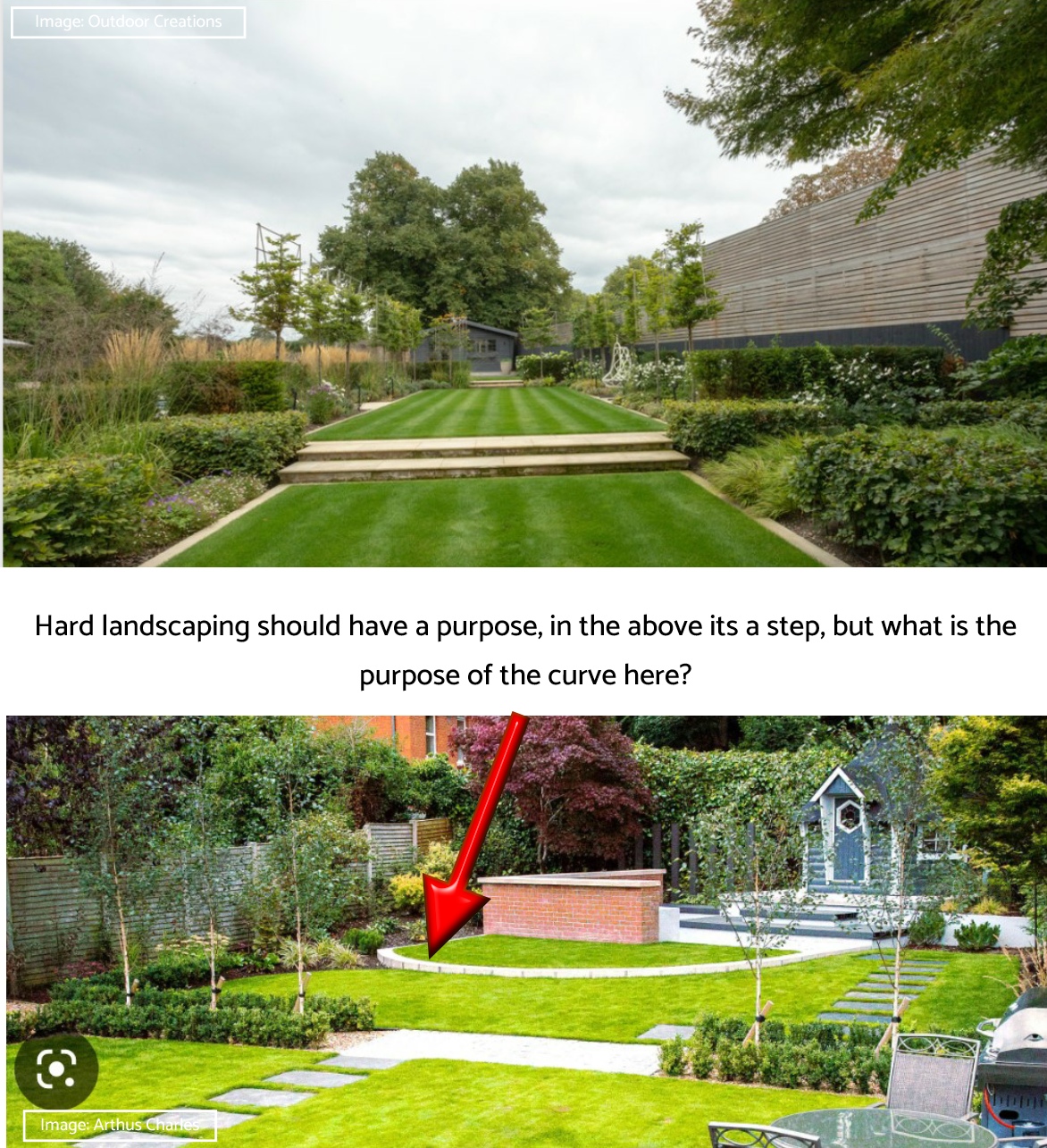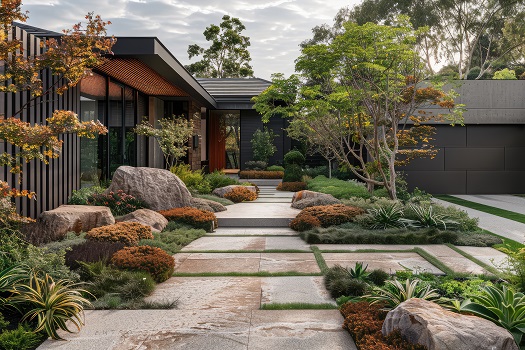Hilton Head Landscapes Can Be Fun For Anyone
Hilton Head Landscapes Can Be Fun For Anyone
Blog Article
A Biased View of Hilton Head Landscapes
Table of ContentsAn Unbiased View of Hilton Head LandscapesAll About Hilton Head LandscapesSome Known Facts About Hilton Head Landscapes.10 Easy Facts About Hilton Head Landscapes ExplainedOur Hilton Head Landscapes StatementsThe Greatest Guide To Hilton Head LandscapesThe Greatest Guide To Hilton Head LandscapesThe 3-Minute Rule for Hilton Head Landscapes
Type compatibility is additionally a significant element of unity in designone or 2 noticeably various kinds are good for comparison and focus, yet usually all various other kinds need to have some resemblances for a linked look. Texture refers to exactly how crude or great the surface area of the plant or hardscape material feels and/or looks.
Instances of plants with coarse appearance consist of philodendrons, agaves, bromeliads, hollies, hands, and hydrangeas. Features that develop fine texture consist of little vegetation; thin, strappy leaves (yards) or high, thin stems; small, dense twigs and small branches; long stems (vines); and tiny, fragile flowers.
Hilton Head Landscapes for Beginners
Most plants are average appearance, because they can not be called having either rugged or fine texture. They are defined by medium-sized fallen leaves with straightforward shapes and smooth sides. The average-sized branches are not densely spaced nor extensively spaced, and the overall type is normally rounded or mounding. Medium-textured plants act as a background to link and merge the crude- and fine-textured plants.

To make an area really feel smaller sized, put the rugged structures along the external border and the fine textures closest to the customer. The information of the coarse structure makes the plants appear closer and makes the area really feel smaller. The perceived texture of plants can likewise transform with the distance from the plant.
The 3-Minute Rule for Hilton Head Landscapes
Strong shades raise the contrast and make the texture appear coarser, while soft colors can squash texture. Hardscape with a crude texturesuch as extremely rough rocks and vibrant, large timberstends to make all plant product show up extra moderate distinctive. Designers often establish an appearance research study (Figure 8) on paper to assist make a decision the plan of plant materials.
Shade in plant material and hardscape adds passion and selection to the landscape. Color is the most obvious component in the landscape and is usually the emphasis of most home owners; nevertheless, it is likewise the most momentary component, usually lasting only a few weeks a year for private plants.
An Unbiased View of Hilton Head Landscapes
A basic description of the shade wheel consists of the three primaries of red, blue, and yellow; the 3 additional colors (a mix of 2 primaries) of green, orange, and violet; and 6 tertiary colors (a mix of one nearby primary and secondary color), such as red-orange. Color theory explains the connection of colors to each other and just how they need to be used in a structure.

Comparable (in some cases called unified) color pattern are any type of three to five shades that are nearby on the color wheel, such as red, red-orange, orange, yellow-orange, and yellow, or blue, blue-violet, and violet (landscape design hilton head). The colors are associated to every various other since they commonly consist of two primaries blended to develop a secondary and two tertiary shades, which means they share typical properties
They tend to have high comparison between them. The most typical sets are violet and yellow, red and environment-friendly, and blue and orange. Complementary shades are frequently located naturally in blossoms; a typical pair is yellow and violet. Shade is found in the blossoms, foliage, bark, and fruit of plants.
Some Ideas on Hilton Head Landscapes You Should Know
Eco-friendly foliage in all its numerous shades is the dominant color by amount, yet other colors record interest quicker due to the fact that of their high comparison to the shade green. Shade is also discovered in buildings, rocks, pavers, timber, and furnishings. A lot of shades in all-natural products, such as rock and wood, are commonly low-key and tend to be variations of brown, tan, and pale yellow.
Shades have residential or commercial properties that can impact feelings, spatial understanding, light top quality, balance, and focus. Great colors often tend to be soothing and should be utilized in areas for leisure and peacefulness.
Fascination About Hilton Head Landscapes
Trendy colors have a tendency to recede and are perceived as being further away, making an area really feel larger. Shade can likewise be used to catch attention and straight views.
As an example, bright yellow, which has the greatest intensity, likewise has a high comparison with all other shades (typically referred to as a "pop" of shade) and need to be used moderately. A percentage of extreme color has as much aesthetic weight as a huge quantity of a more restrained or weaker color.
Comparable (occasionally called harmonious) color design are any three to 5 shades that are surrounding on the shade wheel, such as red, red-orange, orange, yellow-orange, and yellow, or blue, blue-violet, and violet. The colors are relevant per other because they commonly include two primaries blended to create a secondary and two tertiary colors, which indicates they share usual buildings.
The Greatest Guide To Hilton Head Landscapes
They often tend to have high comparison between them. The most common sets are violet and yellow, red and environment-friendly, and blue and orange. Corresponding shades are often located normally in flowers; a typical pair is yellow and violet. Color is located in the flowers, foliage, bark, and fruit of plants.
Environment-friendly vegetation in all its different shades is the leading shade by quantity, yet various other colors record focus quicker due to their high comparison to the color green - weblink landscapers hilton head island - https://issuu.com/h1tnhdlndscps. Color is also located in buildings, rocks, pavers, timber, and furnishings. A lot of colors in all-natural materials, such as rock and timber, are typically low-key and often tend to be variations of brownish, tan, and pale yellow
10 Simple Techniques For Hilton Head Landscapes
Color is an important aspect for developing interest and range in the landscape. Shades have properties that can affect emotions, spatial assumption, light quality, balance, and focus. One home of shade is defined family member to temperaturecolors seem cool or warm and can impact emotions or feelings. Great shades often tend to be calming and ought to be utilized in areas for relaxation and tranquility.
The "temperature" of colors can also influence the understanding of distance. Great shades tend to recede and are perceived as being further away, making a space feel larger. Cozy shades often tend to development and are regarded as being better, making a space really feel smaller sized. Color can additionally be utilized to record attention and direct sights.
Brilliant yellow, which has the greatest intensity, additionally has a high comparison with all various other colors (often defined as a "pop" of color) and need to be utilized moderately. A small amount of intense shade has as much visual weight as a large quantity of a much more controlled or weak color.
Report this page